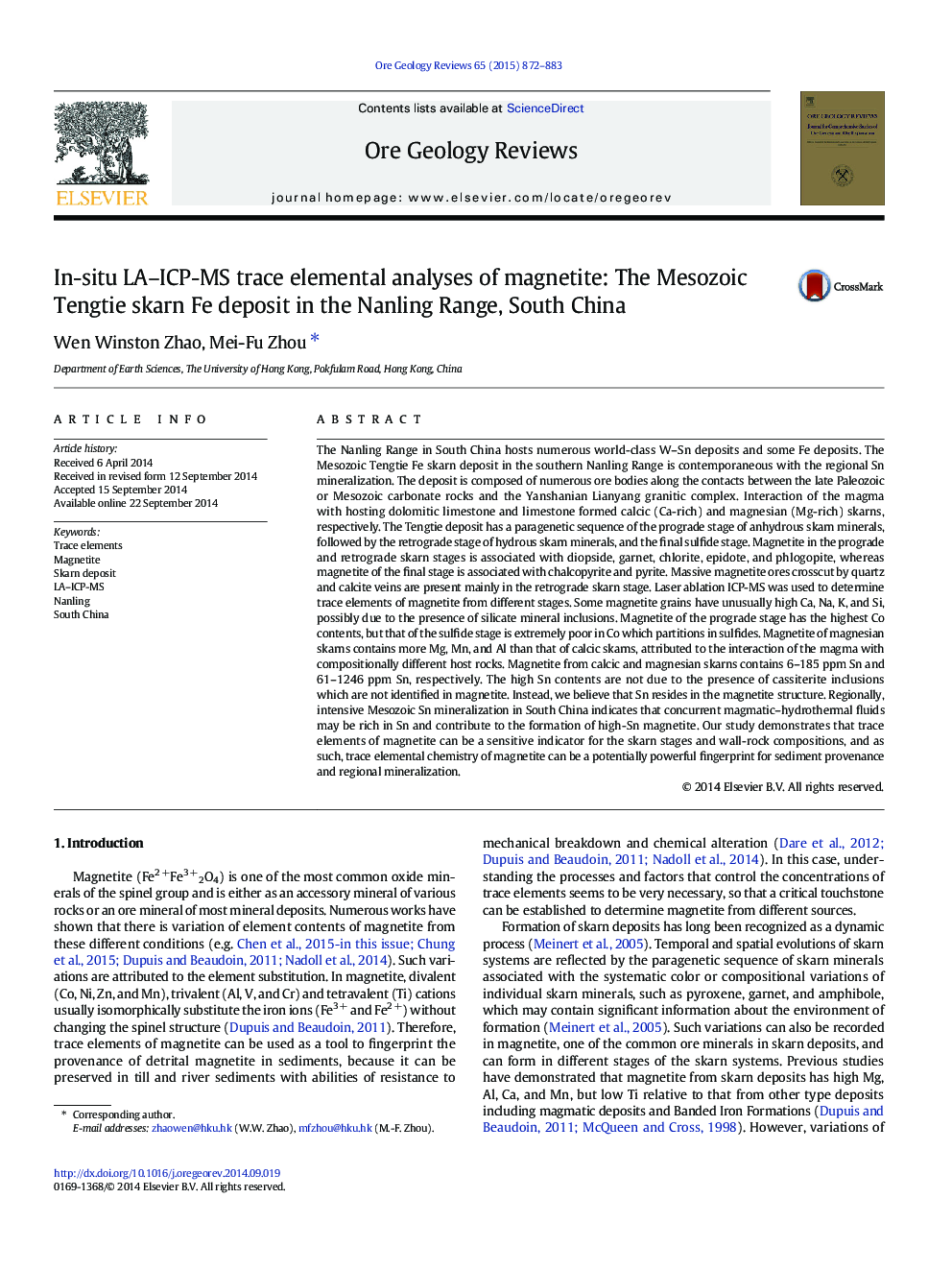| کد مقاله | کد نشریه | سال انتشار | مقاله انگلیسی | نسخه تمام متن |
|---|---|---|---|---|
| 4697148 | 1351864 | 2015 | 12 صفحه PDF | دانلود رایگان |

The Nanling Range in South China hosts numerous world-class W–Sn deposits and some Fe deposits. The Mesozoic Tengtie Fe skarn deposit in the southern Nanling Range is contemporaneous with the regional Sn mineralization. The deposit is composed of numerous ore bodies along the contacts between the late Paleozoic or Mesozoic carbonate rocks and the Yanshanian Lianyang granitic complex. Interaction of the magma with hosting dolomitic limestone and limestone formed calcic (Ca-rich) and magnesian (Mg-rich) skarns, respectively. The Tengtie deposit has a paragenetic sequence of the prograde stage of anhydrous skarn minerals, followed by the retrograde stage of hydrous skarn minerals, and the final sulfide stage. Magnetite in the prograde and retrograde skarn stages is associated with diopside, garnet, chlorite, epidote, and phlogopite, whereas magnetite of the final stage is associated with chalcopyrite and pyrite. Massive magnetite ores crosscut by quartz and calcite veins are present mainly in the retrograde skarn stage. Laser ablation ICP-MS was used to determine trace elements of magnetite from different stages. Some magnetite grains have unusually high Ca, Na, K, and Si, possibly due to the presence of silicate mineral inclusions. Magnetite of the prograde stage has the highest Co contents, but that of the sulfide stage is extremely poor in Co which partitions in sulfides. Magnetite of magnesian skarns contains more Mg, Mn, and Al than that of calcic skarns, attributed to the interaction of the magma with compositionally different host rocks. Magnetite from calcic and magnesian skarns contains 6–185 ppm Sn and 61–1246 ppm Sn, respectively. The high Sn contents are not due to the presence of cassiterite inclusions which are not identified in magnetite. Instead, we believe that Sn resides in the magnetite structure. Regionally, intensive Mesozoic Sn mineralization in South China indicates that concurrent magmatic–hydrothermal fluids may be rich in Sn and contribute to the formation of high-Sn magnetite. Our study demonstrates that trace elements of magnetite can be a sensitive indicator for the skarn stages and wall-rock compositions, and as such, trace elemental chemistry of magnetite can be a potentially powerful fingerprint for sediment provenance and regional mineralization.
Journal: Ore Geology Reviews - Volume 65, Part 4, March 2015, Pages 872–883